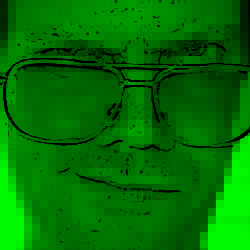Aiming for Precisionism but Missing
When I was in Houston, I took perhaps my favorite photo-of-mine ever, this shot of the Houston Hyatt. It reminded me of some photos that the artist Charles Sheeler took. But he didn't leave his photos alone. He used them as models for his paintings. His paintings smoothed the images out, made them flatter.
I don't know how to paint. I'm not going to get good at it any time soon. As a lazy engineer, I'm always looking for shortcuts. If all I want to do is smooth some of the texture out of a photo, maybe I can do that in software. I tried opening up the photo in the GIMP, a photo-editing program. I told it to use a palette of just 16 colors. That looked--too flat. Too weird.
So I tried writing my own image-manipulation program. Python has an Imaging library; its API is nice; this was a fun thing to play with. What did I try? Consider the image, one row of pixels at a time. For each row, set up four levels each of Red, Green, Blue. Draw the photo, "restrained" to this palette.
![[altered photo]](http://lahosken.san-francisco.ca.us/importable/houston_view_6bit_rowpalette_excerpt.png)
The result is... not so great. Not so precisionist; all to pointillist. It reminds me of an old GIF file, full of noise forced by its small palette. On the other hand, it's strange to look at this image, and to know why it's noisy, to understand the complicated filter I applied to it. It inspires other filters.
Labels: art, photography, programming
